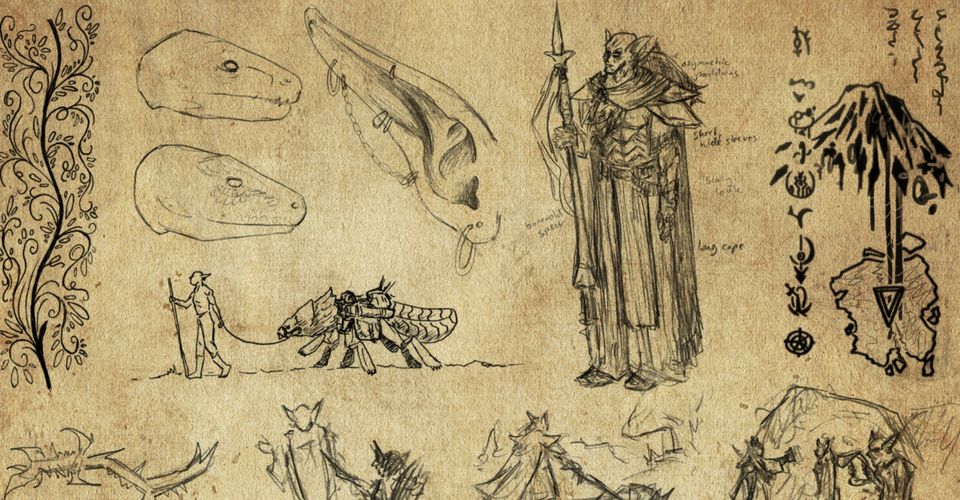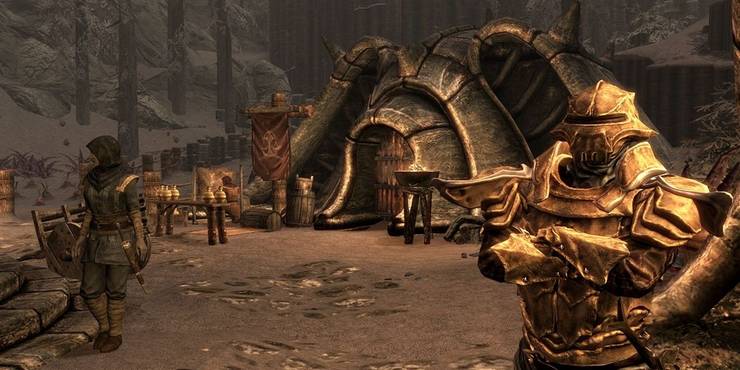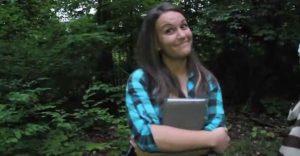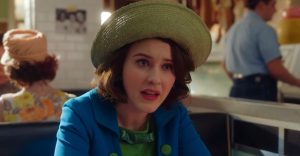RPG Worldbuilding Principles For Elder Scrolls: Morrowind-Type Settings

Most of The Elder Scrolls open-world computer RPGs take place in landscapes familiar to Lovers of Norse mythology and J.R.R. Tolkien; The Elder Scrolls 3: Morrowind, however, stands out from the rest by virtue of the strange new world of mushroom towers, giant insects, and feuding gods it drew players into. The weird details of Morrowind‘s setting have inspired many tabletop Game Masters to break out the mold of classic Western Fantasy by building worlds just as alien. The more successful of these “Weird Fantasy” RPG settings were and are made using principles like the ones listed below.
In the world of The Elder Scrolls, the Imperial province of Morrowind is regularly scorched by ash-storms from a massive volcano where the heart of a dead god beats. Other counties are verdant with the mushroom towers of scheming wizards, or farming communities who work the fields with giant domesticated insects. Above a temple-city hangs an asteroid, frozen in time by the will of god-king Vivec, one of the three living deities who rule the Dunmer people. Those are just a few of the marvelously weird concepts in The Elder Scrolls 3: Morrowind, a 2001 RPG that remains a cult classic among Elder Scrolls fans to this day despite dated graphics.
The open-world environment of The Elder Scrolls 3: Morrowind was the result of a frantic outpouring of activity from Bethesda’s creative team, filled with passionate ideas and an equally passionate desire not to go bankrupt. Designers like Ken Rolston and Mark Nelson designed quests, environment artists like Mark Bullock built the architecture and terrain of the world, and writers like Michael Kirkbride created in-game manuscripts, religious scripture, mythology, and characters that brought their world to life. Each of these video developers used world-building principles just suitable for creating strange, unconventional fantasy tabletop campaign settings.
Morrowind RPG Worldbuilding Tip #1: Use Creation Myths

If a Game Master creates a fantasy world from scratch, it’s only appropriate they contextualize their nature of their world with a suitably epic creation myth. Create a pantheon of deities, each with their own unique domain and personality. Have them create the world through a metaphysically profound ritual: telling a story, singing a song, ordering primordial chaos, or cannibalizing the corpse of another dead divinity. Use the whims and flaws of these deities to explain the oddities of the fantasy world, and use their rivalries and grudges to foreshadow the core conflicts of the RPG campaign’s narrative – good vs. evil, order vs. chaos, reason vs. emotion, etc.
In the case of The Elder Scrolls 3: Morrowind, Michael Kirkbride and other game writers at Besthesda took the unfleshed fantasy world of earlier Elder Scrolls games and gave it depth with surreal new myths and legends, as described in a Polygon interview with Bethesda veterans during the 25th anniversary of Morrowind‘s release. In the creation myth of The Elder Scrolls, a mysterious deity named Lorkhan tricked his fellow gods into creating/dreaming/becoming the world of Mundus, an act that wound up binding/restricting these deities metaphysically. In retribution, the deities dismembered Lorkhan and flung his heart into a volcano. Ages after, three powerful nobles of Morrowind betrayed their master and used the energies of the Heart of Lorkhan to transform themselves into a Tribunal of living gods, and the main villain of the Elder Scrolls 3 seeks to use this very same heart to power a weapon of mass destruction.
Morrowind RPG Worldbuilding Tip #2: Take Eerie Lifeforms & Makes Them Everyday Life

In the Polygon interview with developers of The Elder Scrolls 3: Morrowind, Michael Kirkbride recalled childhood memories of going camping with his father and how he was frightened of bugs, mushrooms, and ash during those trips. As a grown-up game writer, he then decided to give the setting of The Elder Scrolls 3 an alien feel by making large versions of his childhood fears a normal part of life in Morrowind. Hence the wizard towers made from hollowed-out mushrooms, the giant bugs used for menial labor and transportation, along with the gas-mask-style helmets used to filter out ash from the air.
If tabletop RPG Game Masters want to emanate Morrowind‘s feel, rather than just mimic it, they should look at the diverse flora and fauna of the world, identifying living (or extinct) creatures they find both interesting and alien. Then they should ask themselves: what would a world be like if creatures like these grew to larger sizes than normal? Or if they were the apex predators of their eco-system? Or if people domesticated them? Or if they themselves were sentient?
Morrowind RPG Worldbuilding Tip #3: Create Cultures Shaped By Myths

The traditional dark elf culture, feuding Great Houses, and god-hero monarchs of Morrowind, as devised by creators at Bethesda, were heavily inspired by weird science-fiction societies seen in their favorite books and movies – Dune, Star Wars, and The Dark Crystal, among others. The more subtle touches of “Dunmer” society, religion, art, and literature in The Elder Scrolls were extrapolated by developers from the alien terrain and ecology of Morrowind, and how civilizations living there would adapt to it. The angular armor and blades of town guards, for instance, are forged from the shells, bones, and chitin of giant insect creatures, while the ascendance of three mortal heroes to godhood led to a religious schisms between Tribunal-worshipping urbanites and the nomadic Ashlanders, who still cleave to their older, more distant Daedric gods.
A tabletop RPG world-builder can infuse their fantasy communities and cultures with rich detail simply by thinking through the logical implications of the ecosystem and creation myth they’ve created. A god or goddess who regularly appears and walks among their populace, for instance, would be regarded differently from a deity who only speaks in vision or dreams. Giant domesticated trilobites or dinosaurs would influence how fantasy cultures harvest crops, hunt game, or wage war. Societies where anyone could learn magic would have wildly different hierarchies from those where magic is a hereditary gift, and so on.
Morrowind RPG Worldbuilding Tip #4: Let Players Overturn The Status Quo

When a player starts a new game of The Elder Scrolls 3: Morrowind (or the upcoming Skywind Mod for Skyrim), they enter into a land full of ticking time-bombs ready to go off. The divine powers of the Tribunal ruling Morrowind are fading. The ash-storms from the Red Mountain carry deadly diseases that turns people into monsters. The wealth of the Great Houses of Morrowind is built on the backs of oppressed and mistreated slaves. Furthermore, the mad Dagoth-Ur and his minions are secretly construct a giant magical robot to try and take over the world. In short, there’s a lot of problems in Morrowind for a hero – i.e., the player – to solve.
To keep their intricately constructed fantasy world from simply being a pretty snow-globe, Game Masters need to infuse their tabletop RPG campaign setting with disasters, crises, political plots, and evil schemes that will alter the status-quo for good or ill if players don’t intervene. Players should be able to use a mixture of violent and non-violent approaches to solve these “problems.” Most importantly, the choices players make should have permanent, meaningful consequences for the alien fantasy world the Game Master’s created – much like how The Elder Scrolls 3: Morrowind lets players kill key quest NPCs, and in doing so, doom the world.
Source: Polygon
About The Author

















